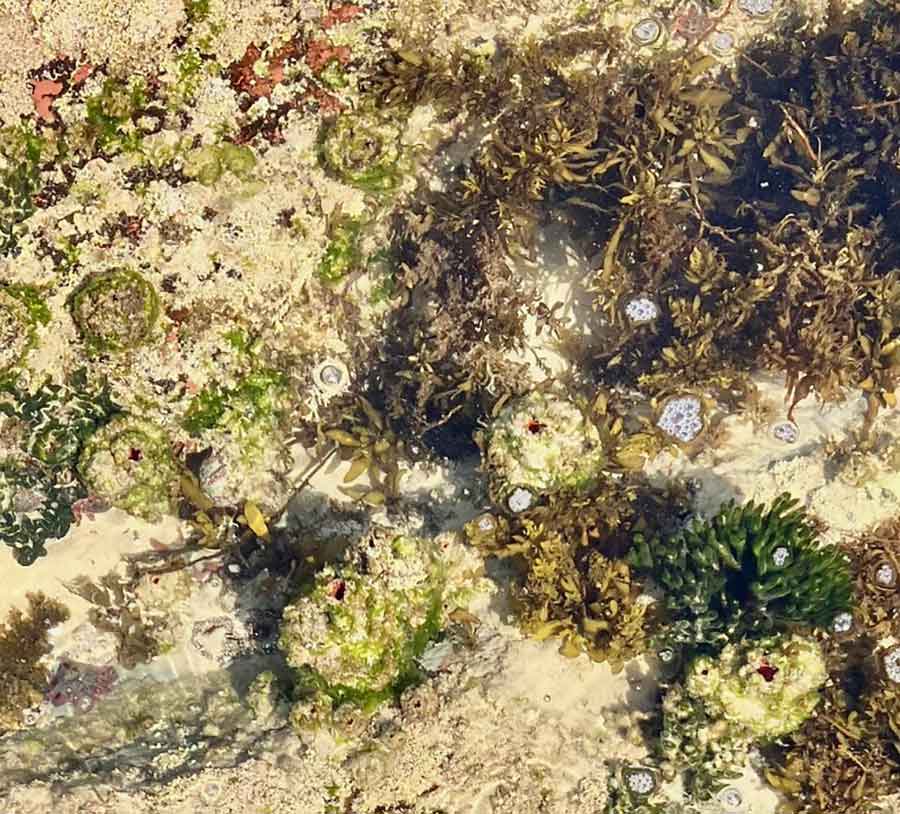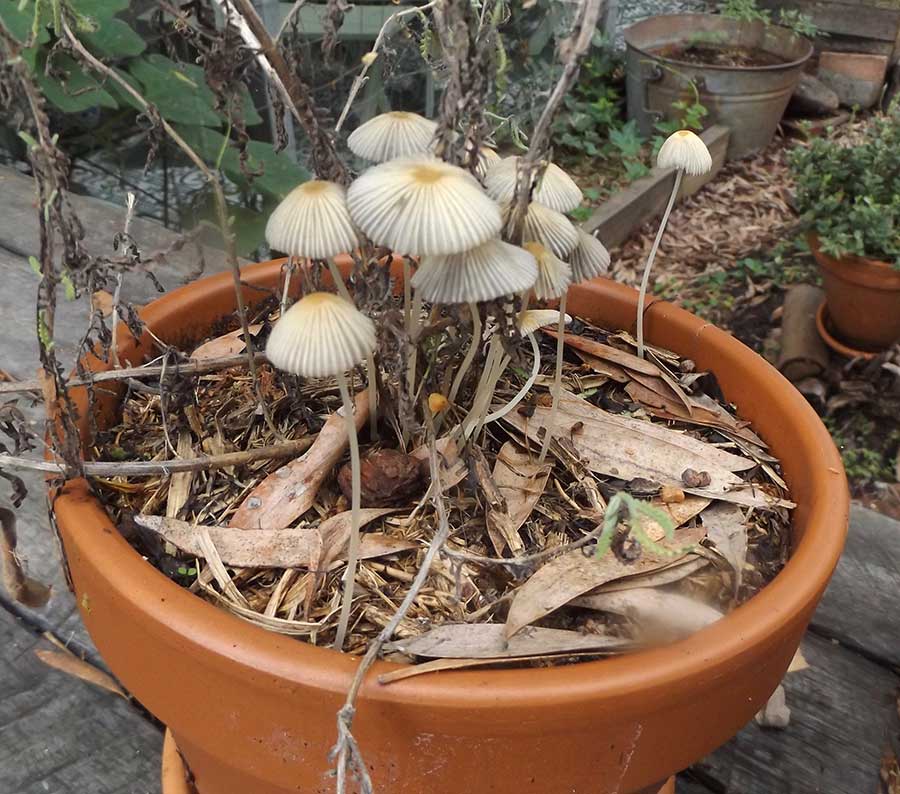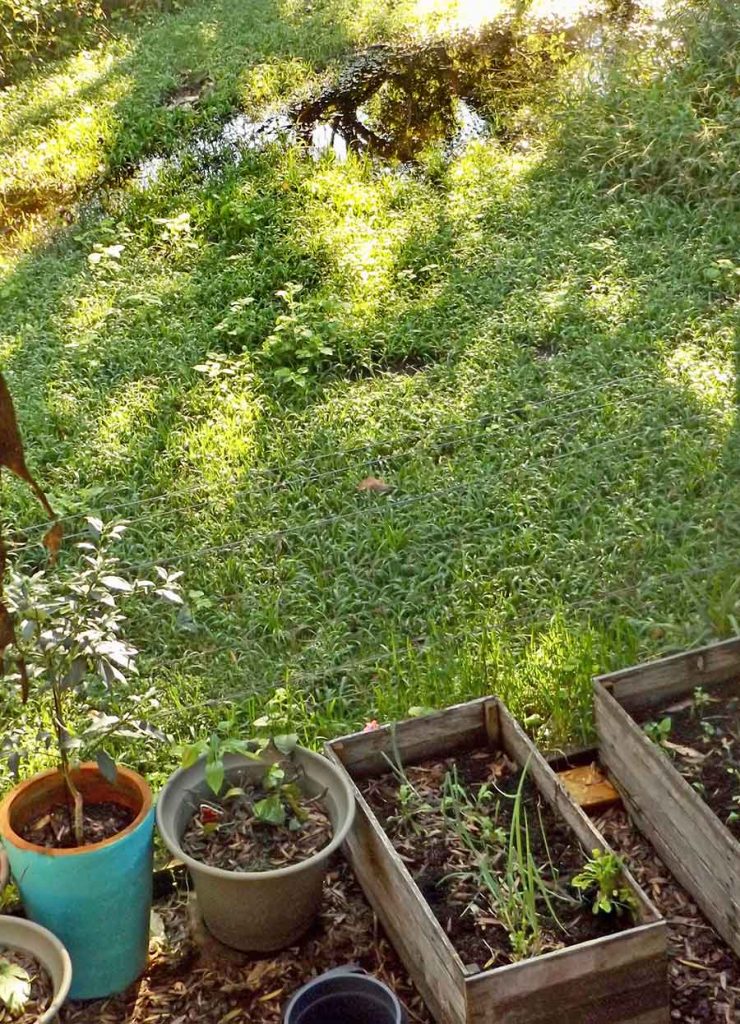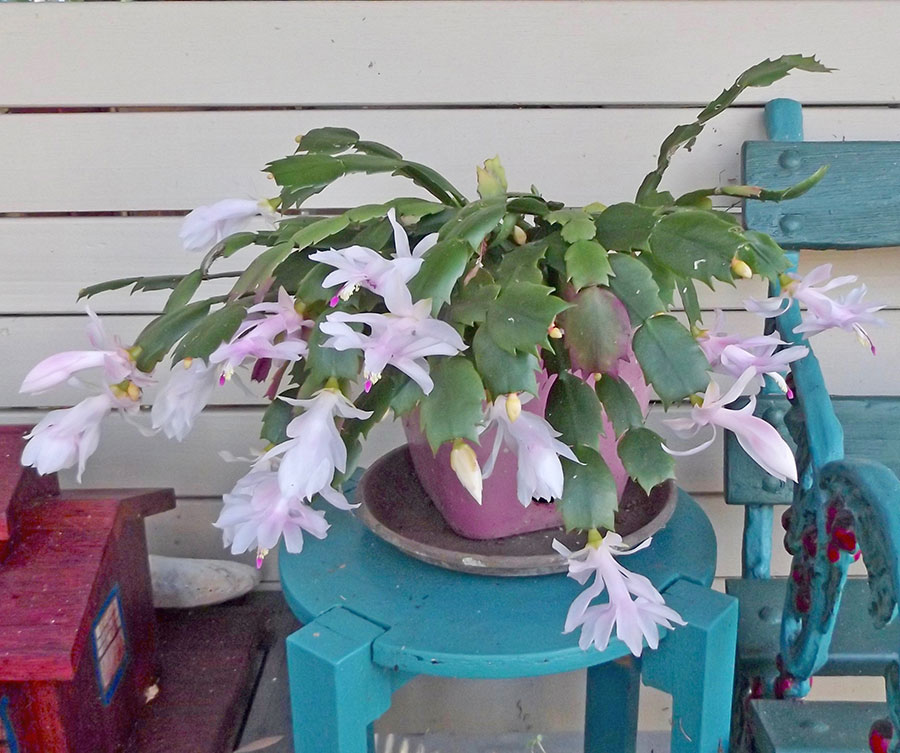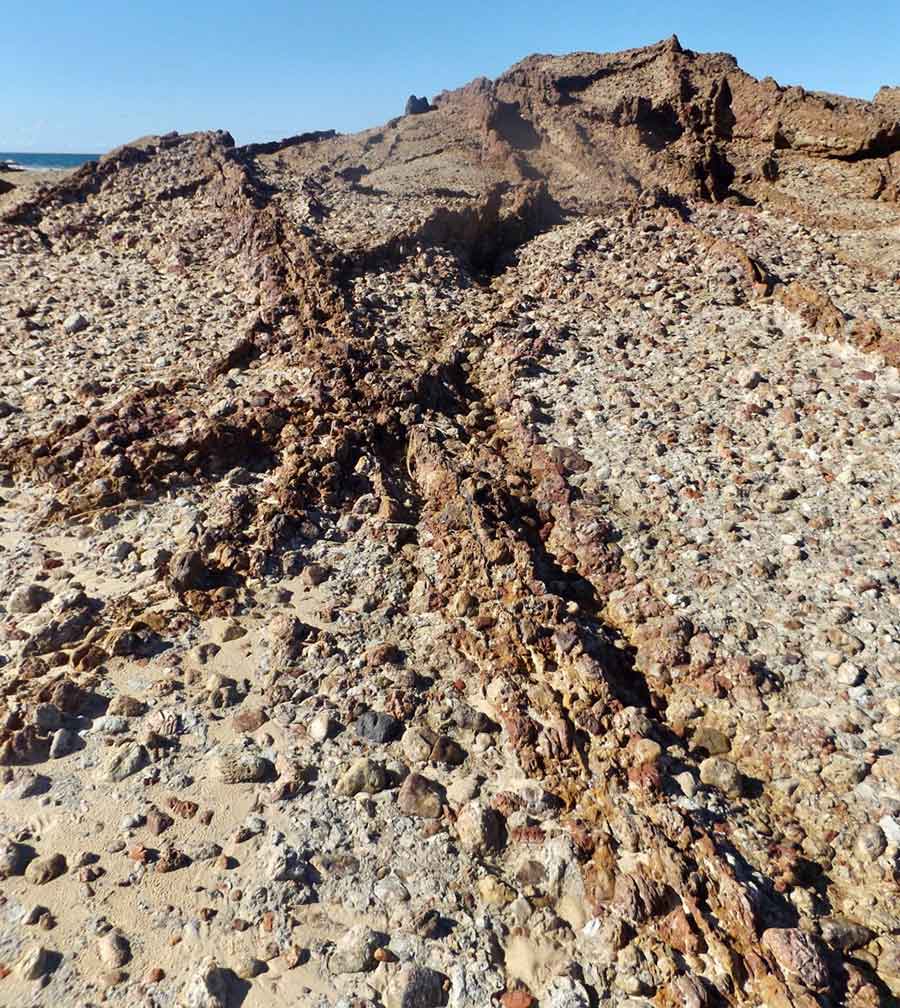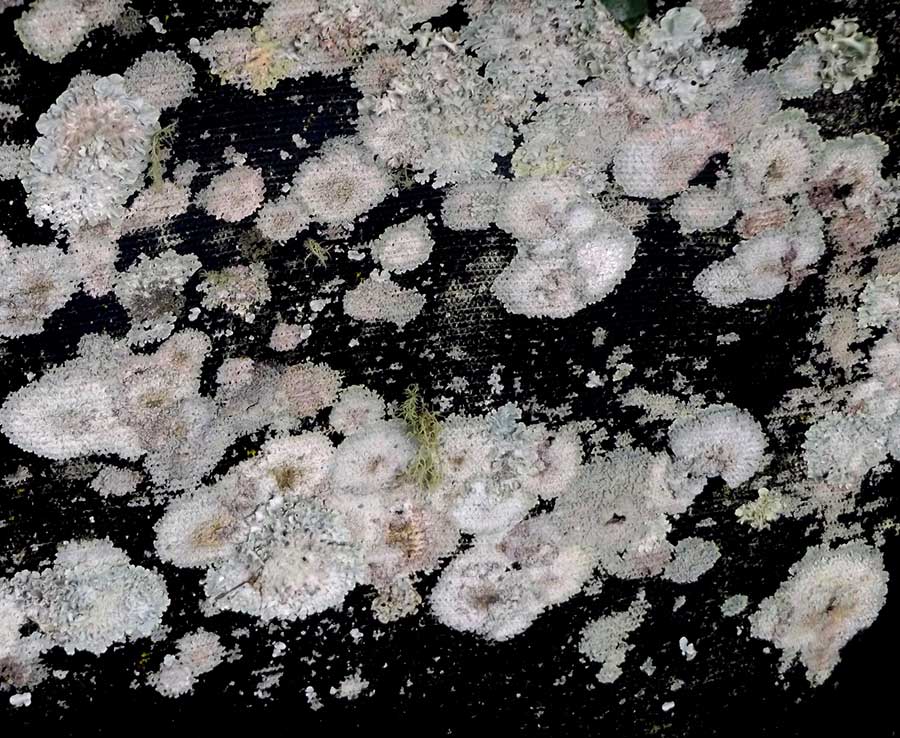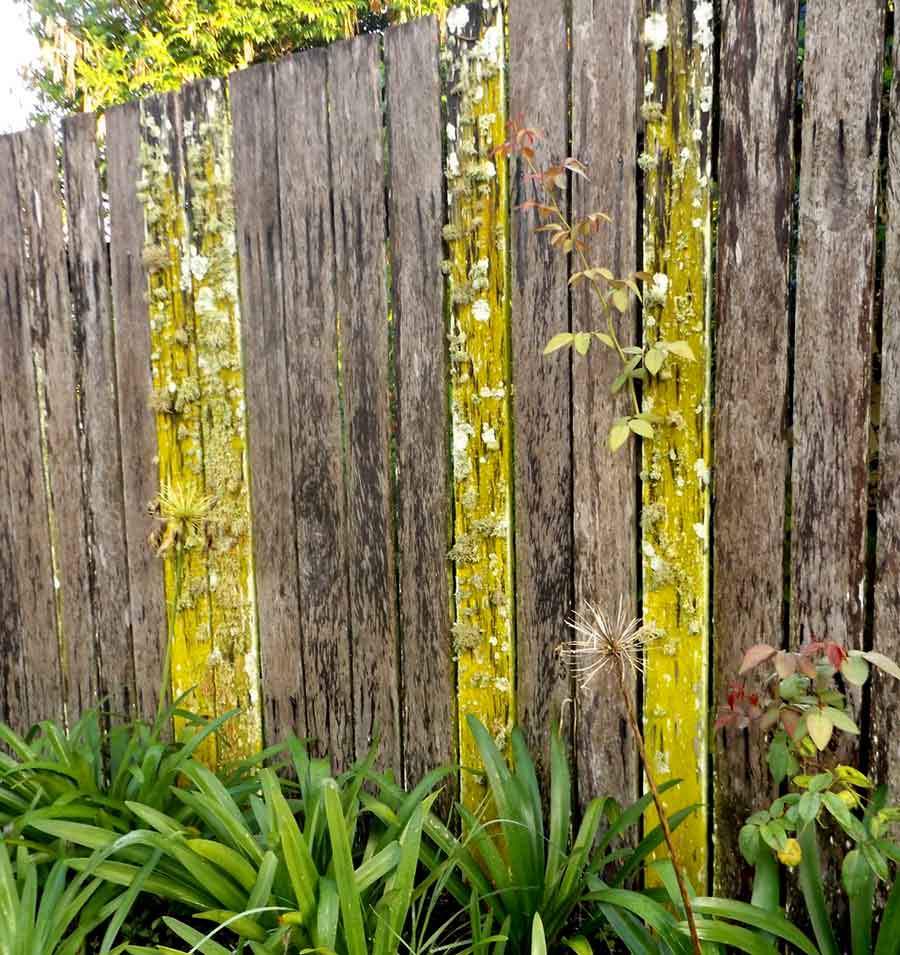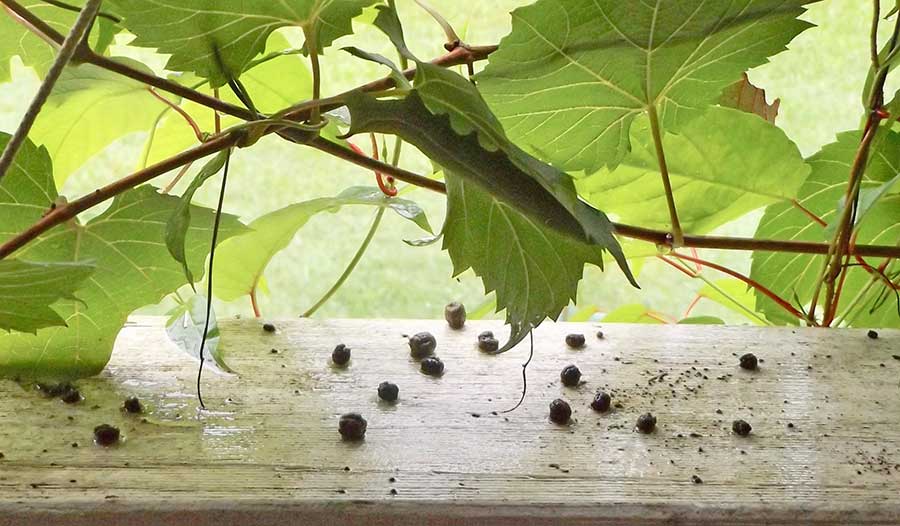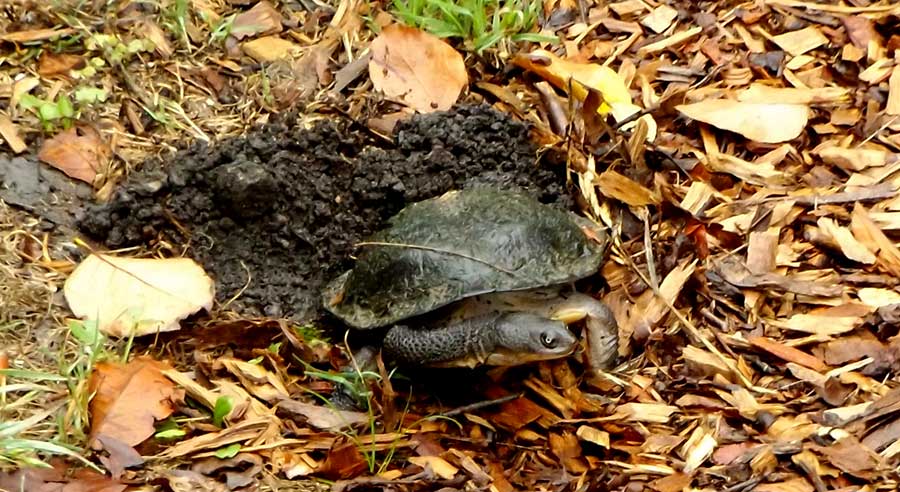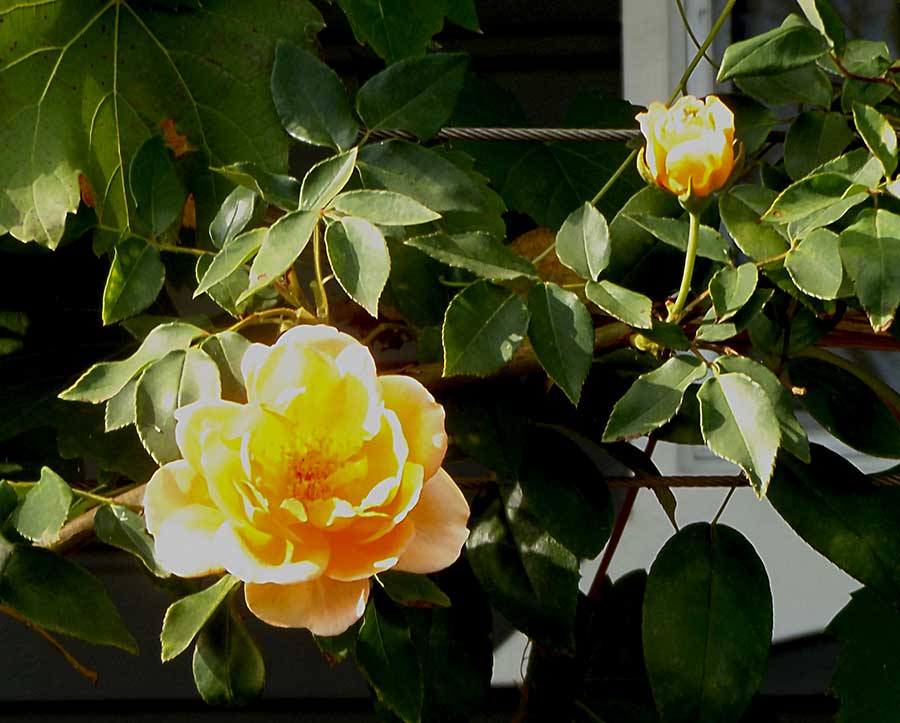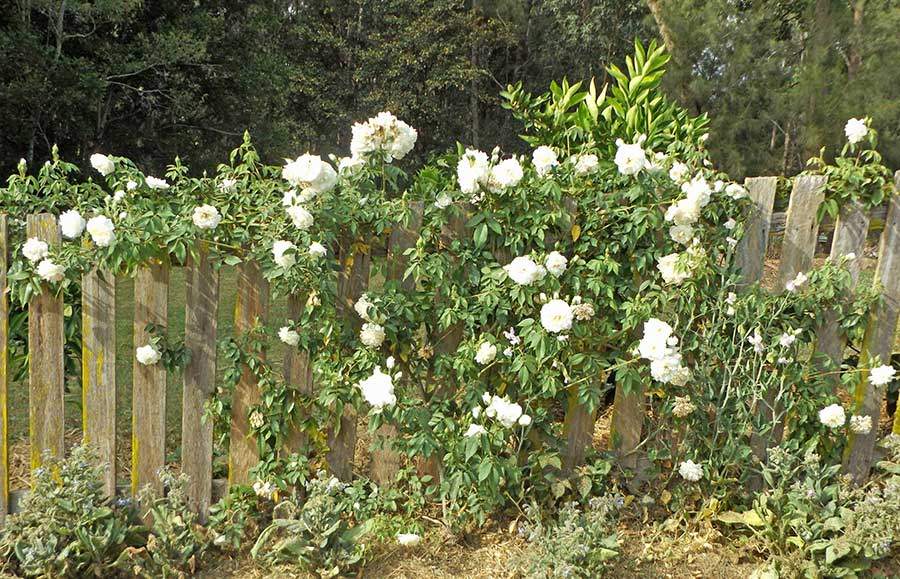
The lucky inhabitants and visitors to this garden find plenty to eat, if they are partial to nectar or berries. The owners have planted native shrubs and small trees with the specific aim of attracting and providing for them.

It’s highly successful, as the frequent forays of honeyeaters in this blooming time mean the branches are rarely still, a bouncing and swaying leafy larder.
Grevilleas, Kangaroo Paws, Banksias, Bottlebrushes and Lilly-Pillies abound.

This dense shrub is a favourite with small birds, and its prolific flowers are an unusual and very pretty shade of pink.

But my favourite in the pink stakes is the Lilly-Pilly with beautifully drooping hands of pale pink new leaves, which fade as they age.

Its bunched berries are pink too: what’s not to like?

Or if pink does not appeal, there are many of these Lilly-Pillies with cream powder puff blossoms.

Their fruit is a darker pink, larger and in smaller bunches, and perhaps more appetising?
It would be a very choosy bird that did not find this garden both a haven and a rich food source.
As a human I find it both a haven and a rich source of visual beauty, with the sightings and sounds of the birds an extra treat.
I could probably eat the Lilly-Pillies, but I’m too busy eating raspberries off the vine…




